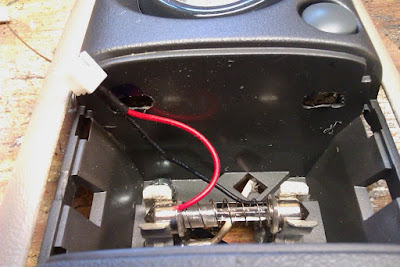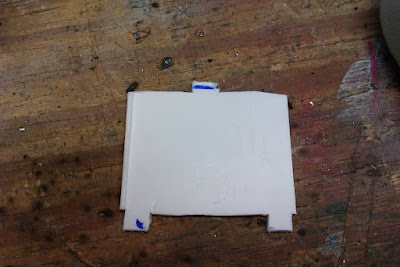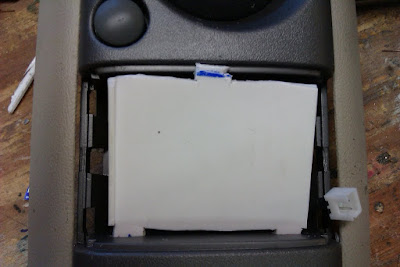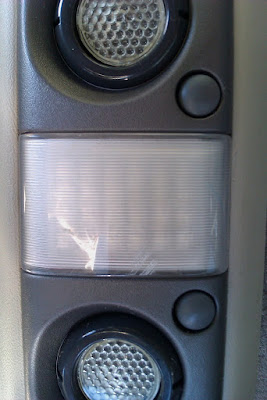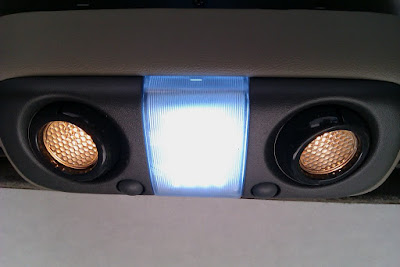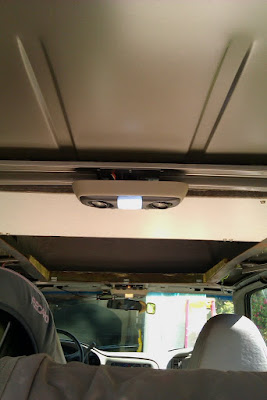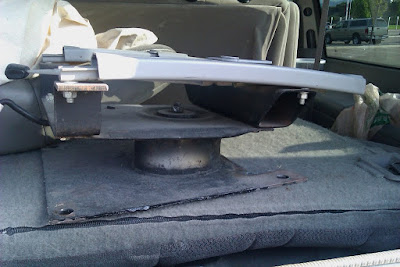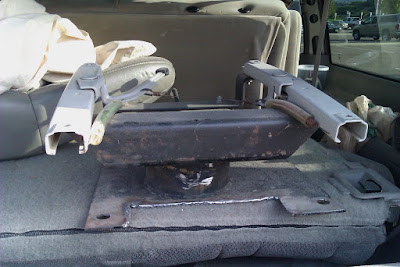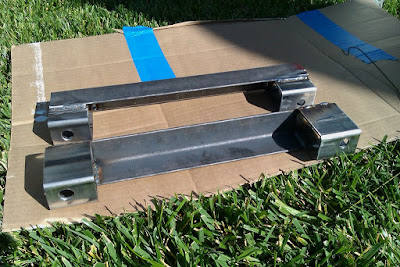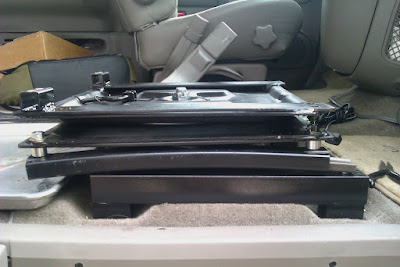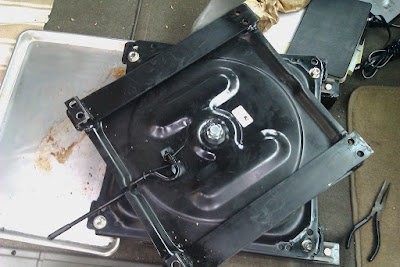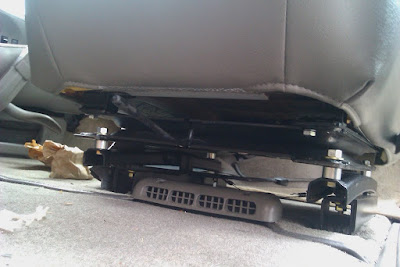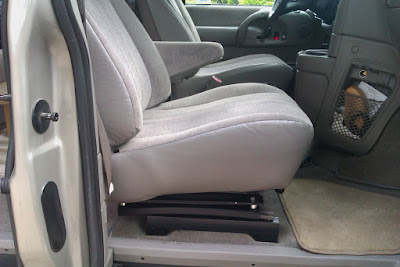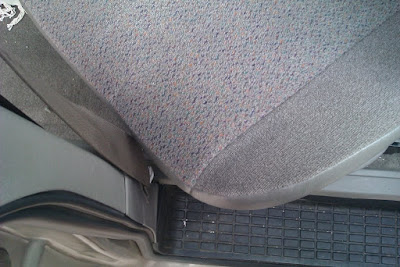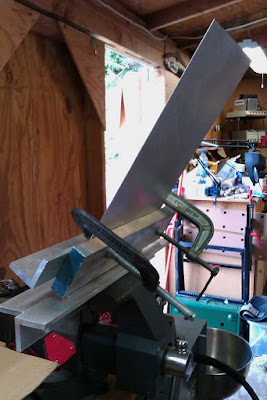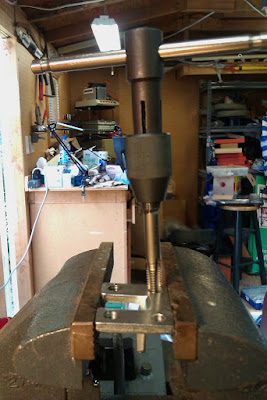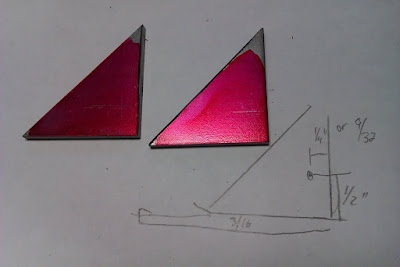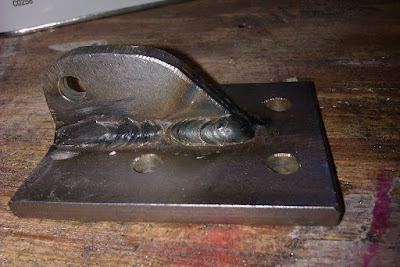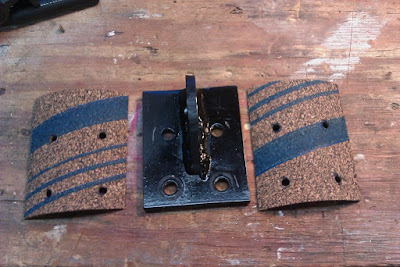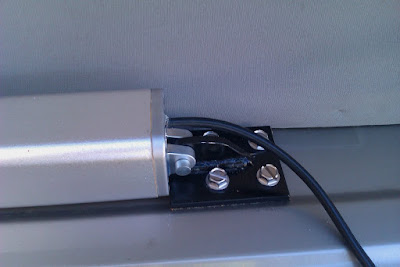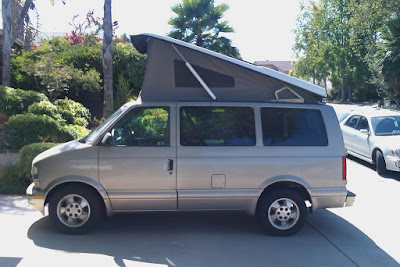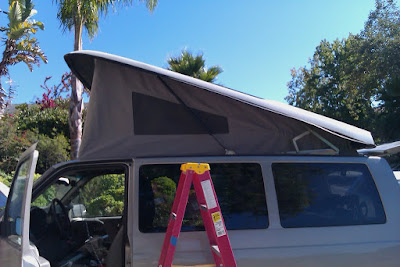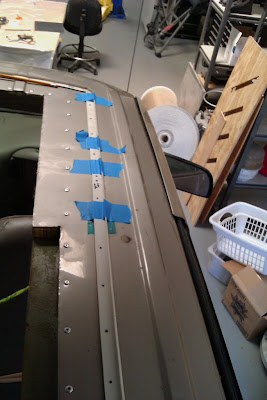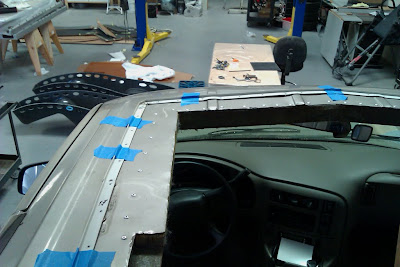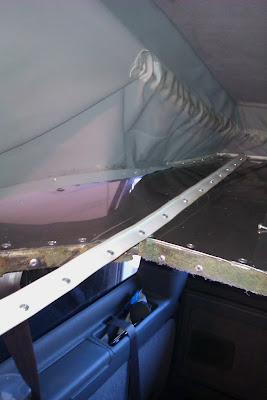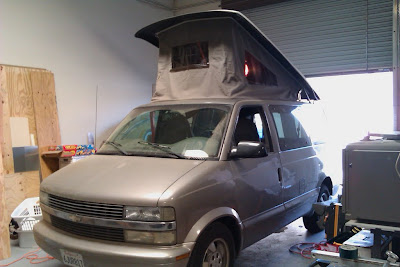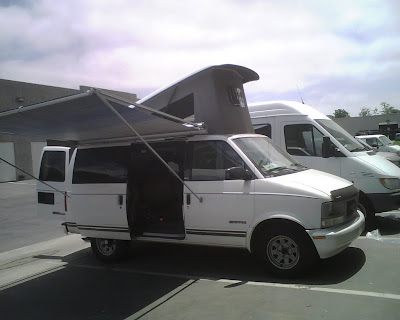My "Astrolander"/Zombiemobile project has just taken a major step forward. This past weekend I flew to Vancouver and picked up a GTRV-equipped Safari donor van.

A few weeks ago, I found a high-mileage and beatup GTRV Safari on craigslist. 380,000 km (236k miles), and what the seller generously described as an interior "in need of TLC", but the top shell, tent, and hardware are all in excellent shape. Moreover, it was selling for an incredibly low price, cheap enough to justify buying the van just for the parts. Van was in North Vancouver, BC, but the owner was hesitant to deal with me, he thought I was a scammer! Once I explained that I would pay his asking price because the top shell, tent, and other hardware alone were worth that much to me, he agreed to sell. Then it was just a race to get my passport renewed and hope that nobody else stumbled across the advertisement and thought it was as good a deal as I did! Of course, any good road trip has an adventure story. Here's mine in Reader's Digest:
Finally flew into Vancouver last Sunday, took the SkyTrain and SeaBus to North Vancouver and met the seller. We looked over the van, covered some of the problems, but confirmed that the pop-top and tent are in excellent shape. Concluded the deal, including purchasing a 1-day BC insurance package, and I head for the border.
Border line was massive, almost 2 hours just to get to the kiosk so I can get pulled into secondary to start the process of importing the vehicle to the USA.
First CBP officer at secondary didn't know as much about vehicle importing as the CBP website (and thus me), so we wasted some time with him telling me I couldn't import the van because the speedo had kph on top. (!!?!) After I insisted that the van had all the proper labelling (CMVSS and EPA labels, etc.) and that it was an HS-7, part-2B import, he handed me off to a second CBP officer who within five minutes confirmed that all was well and I was on my way. It helped that the van was actually built in Minnesota (for the Canadian market, but still), since there was no duty to be paid. The EPA sticker even confirms California-emissions compliance, so this made things much smoother.
Made my way into Bellingham, WA and stumbled into the driveway of my friend Tom, already besieged by the Sportsmobile of fellow internet denizen Brian. Hey, Pop-Top Party!! After comparing Tom's van to mine and the minor evolution of the implementation, we had some decent beer and some grub, all in all a too-short visit. Its worth noting that though Tom and I had been conversing for over a year at this point, we'd never met in person. The internet has truly changed the world.
I have to stop here to thank Tom, Jen, and Brian for such a warm welcome and their fabulous hospitality. By-far the best aspect of the trip was meeting you all and thinking forward about the next visit when we can actually enjoy your beautiful surroundings!!
We picked up my co-pilot Kevin from the Bellingham airport, gathered a few supplies, and aimed the van south. By 11pm, we were on our journey, and here's where we started finding some of the "features" of this wonderful machine. First, the instrument lighting in the dash was out. Lots of fun trying to avoid a speeding ticket in an unfamiliar machine on the very dark northern stretch of the I-5. With the creative use of the map lights, my EDC Fenix E01 penlight, and/or my ipod, we were able to keep tabs on instrumentation until dawn. Other "features": Door locks are broken in an inconvenient combination of ways (lock cylinder on driver's side, power lock switch on passenger side, etc.); water temp gauge reads 40c constantly; no cruise control; and a few other niggles.
We went straight through, stopping only for bio breaks, fuel, and breakfast. By 10am we were far enough into California that it started to get hot. Real hot. The little thermometer on my REI zipper-pull said 100+. Before 11am. Oh, and it turns out the van's AC doesn't work either. Crap. Oh well, windows down, we soldier on. The upside of our late departure from Bellingham was that we had missed any sort of traffic going through pretty much all of Washington, Oregon, and Northern California. The downside is that we hit central California in the middle of one super-hot day. 105-110°F in Sacramento, Bakersfield, etc.
By 4:30pm, we were at the base of the Grapevine. Citibank's Fraud Detection division helpfully declined my card at this fuel stop, because they'd noticed what they thought were "too many" gas purchases. Um, I'm on a roadtrip back from Canada, hello? The guy starts reading off charges in Washington, Oregon, Northern California.... oh, all moving south. Duh. Sorted out that little issue and back on our way.
For most of the afternoon, it seemed the Water-temp gauge had been "waking up". It had slowly begun to register, then read near the middle of the gauge. As we got into the serious climb of the grapevine, it started to move more quickly toward the top end of the gauge. I wasn't sure whether I could trust it, but figured discretion was wise so we took a casual pace up the hill. On the descent the gauge settled back to just south of the middle, so we pressed on. With a last-minute move into the heavy-truck lane, we narrowly missed getting stuck in a massive backup due to a recent accident where the passenger and truck routes of the grapevine rejoin, then had clean sailing all the way through LA. Somehow we'd timed the drive to miss EVERY bit of rush hour traffic on the entire west coast of America.
We entered into San Diego proper by 9pm, dropped off my copilot, and headed for home. Stopped at the store to get some milk, and then.... crank but no fire.
Yep, after 1400+ miles, two countries, three states, and 22 hours, the van has died within two blocks of my house. Oh well, it could have been much, much worse.
I walked home, took a shower and went to bed. The next morning I got up and started trying to debug the van. After half a day of checking the easy stuff, the manager of the grocery store who's parking lot the van had died in got sort of testy about me crawling around the van checking things, so I just had it towed to my friend's shop. Getting it running would have been convenient, but as it stands is not strictly necessary since the donor wasn't expected to survive the transplant procedure anyway!
Next steps? Start taking pictures and pulling parts. We'll probably start this weekend.
One last note, I have to say that this acquisition is also a personal milestone for me. By my calculations, and including my wife's car (which is titled in my name, so its fair), this brings my aggregate horsepower to 1022. Yes, I've entered four digits, and I now have an aggregate horsepower equivalent to a Bugatti Veyron plus a Honda 250cc dirtbike. This is short-lived of course, as I still plan to shed one "real" car from the fleet and the donor will take a trip to the scrapyard as soon as I've stripped it for useful goodies, but still...
Read More...
Summary only...
